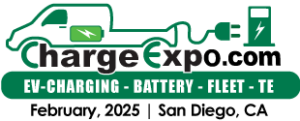F7.1 | DOE and NETL’s Carbon Capture R&D Program
Timothy Fout | Project Manager, US DOE/ NETL
With pending legislation or EPA action on greenhouse gas emissions, there is a concerted effort underway to find ways to meet possible future limits in a cost effective manner. The DOE, through its Existing Plants Program, is targeting existing pulverized coal (PC) power plants since they produce a sizeable portion of current CO2 emissions from all fossil-fuel-based sources, and that only about six gigawatts of the existing coal-fired electricity generating fleet is projected to retire by 2030. Current analysis indicates that state-of-the-art CO2 capture technologies are not cost-effective technologies for capturing CO2 from PC-based power plants. The technologies being researched through the Existing Plants program aim at achieving a 90% capture rate while achieving less than a 35% increase in the cost of electricity. This paper will give an update on the status of the program, its investigation of post combustion capture technologies (including membranes, sorbents and solvents), research into oxy-combustion systems, and development of advanced CO2 compression technologies.
.
F7.2 | A Solid Retrofit Approach for Capturing CO2: Pilot Testing and Equipment Update
Holly Krutka | Research Scientist, ADA Environmental Solutions
Carbon capture and sequestration (CCS) can be an important component of reducing worldwide CO2 emissions from stationary point sources, such as coal-fired power plants. Aqueous amines and ammonia are being demonstrated for CO2 capture in a temperature swing cyclic process. Solid sorbents can also be used in a similar process, but have the potential to drastically reduce the energy required to release the CO2 during material regeneration. Through a DOE Cooperative Agreement with supplemental funding from EPRI and industry ADA Environmental Solutions is conducting a viability assessment of solid sorbents for post-combustion CO2 capture. This evaluation has included screening of potential sorbents as well as process equipment. Laboratory-scale sorbent screening results were used to identify the most promising sorbents. These materials were produced in larger quantities and have been further evaluated at the 1 kW pilot scale. In a parallel effort, a 500 MW concept design is being developed including initial cost estimates and a general arrangement. An update on the progress of the project, focusing on the results of 1 kW pilot testing and the options for process equipment, will be discussed.
.
F7.3 | Carbon Capture Ready Feasibility Case Study for new build CCGT, UK
Richard Lowe | Associate Director, URS Corporation Ltd
EU Legislation now requires all new fossil fuel power plants (>300MWe) to demonstrate Carbon Capture Readiness (CCR) prior to being granted development consent. In the UK, CCR requirements are set out in new guidance, which requires demonstration that any new plant has space available to retrofit carbon capture technology and has an appropriate transport route to a final storage location. The application of this guidance to a specific new build 1,000 MWe CCGT case study is presented. A high level design layout for carbon capture plant based on current technologies has been developed, including innovative use of vertical train technology to optimise the footprint of the capture plant. Electrical and steam demand of the proposed capture plant are calculated and consideration is given to the benefits of stand-alone versus integrated steam and electrical supply to the capture plant. Two alternative transport routes are presented, together with an assessment of potential final storage locations. An economic appraisal of carbon capture and storage is also indicated, to meet CCR requirements. Finally, hazard risk modelling of potential accidental release scenarios of CO2 from the proposed transport pipeline pre- and post compression is shown, given the proximity of the proposed plant to sensitive receptors.
.
F7.4 | Impact of Coal Fired Power Plant Dynamics on Advanced Amine Carbon Capture
Naresh Handagama | Technology Manager/Principal Engineer, Alstom Power Inc.
ALSTOM Power and Dow Chemical jointly operate a pilot plant treating flue gas CO2 emissions in South Charleston, WV since September 2009. Bituminous coal-fired boiler flue-gas is treated with UCARSOL™ FGC-3000 amine solvent. The plant capacity is 5 CO2 tones/day with 90% CO2 capture efficiency. Flue gas is pre-treated by wet flue gas desulphurization (WFGD) and pre-cooler systems for temperature and water balance maintenance. A test program to mimic the power plant dynamics under transient conditions has been conducted. This provides information on synchronized operation of the carbon capture integrated power plant. Key control variables and the best possible manipulated variables are determined through dynamic simulation and demonstrated by experiment. Process systems expertise and control strategies are demonstrated through 6000+ hours of pilot plant operation. Operational philosophy developed through this unique combination of simulation and experiment is easily scalable to allow flexible operation of a large-scale carbon capture system.
.
F7.5 | MHI’s KM-CDR™ Post-Combustion CO2 Capture – Process Overview and Project Update
Steven Holton | Director of Business Development, Mitsubishi Heavy Industries America, Inc.
Mitsubishi Heavy Industries (MHI) currently provides the largest scale CO2 capture plants for commercial CO2 recovery from natural gas fired applications. The company is now focused on providing its KM-CDR™ post-combustion CO2 capture process for commercial scale solutions for coal fired applications. MHI are constructing a 500 Metric ton per day capture plant in collaboration with Southern Company at a commercially operating coal fired power plant in Alabama. The capture plant, which is funded mainly by the two parties, is scheduled to be operational during Q2 2011. EPRI will be conducting testing as an independent third Party. That project, along with scale-up to full commercial size and the recent energy saving enhancements to the KM-CDR™ CO2 capture process, are the focus of this paper.
.
F7.6 | Plant-specific GIS analysis of the CCS retrofit opportunity for the existing coal-fired fleet
Chris Nichols | Analyst, National Energy Techology Laboratory
To enable consideration of CO2 capture retrofit, NETL has performed a plant-specific geospatial analysis of the existing coal-fired fleet and estimated how much the capital cost and parasitic load for CO2 retrofit would vary from unit to unit. Site-specific characteristics such as base plant efficiency, whether or not the unit has a sulfur scrubber, the efficiency of the sulfur scrubber, how much water is available for the unit to use, and how much space is available for the CO2 capture and compression equipment were factored in to an estimate of CO2 capture cost at each generating unit.

